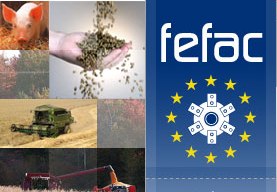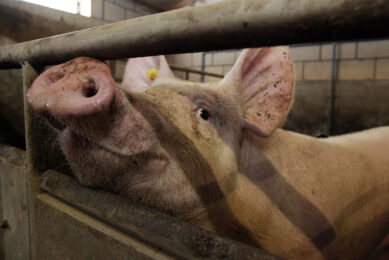European compound feed production slumps 4%

The total production estimate for compound feed production in the European Union is now set at 147.6 million tonnes, which is 3.8% below the figure for 2008 (153.4 mio. t).
The significant downturn has affected all animal species, in particular cattle feed (around -6%), pig feed (-5%) and, to a lesser extent, poultry feed (-1%).
Four key factors have weighed on the EU feed demand in 2009:
1) The dramatic crisis affecting the dairy sector, which triggered a severe contraction of the demand for efficient cattle feed, i.e. compound feed; mainly in the 3rd and 4th quarter;
2) The continuation of the downward slope of the pig production cycle, amplified by the financial difficulties of pig farmers;
3) The low market quotations for cereals, with the consequence that farmers had few incentives to put their cereals on the market rather than using them on the farm; and
4) The financial crisis, which led to lower consumer demand for products of animal origin, i.e. to a switch to less expensive animal proteins sources.
Cattle | Pigs | Poultry | Others | Total | |||
+/- | |||||||
Country | 2009 | 2009 | 2009 | 2009 | 2008 | 2009 | % |
Spain | 6,740 | 9,500 | 4,400 | 909 | 22,117 | 21,549 | -2.6 |
France | 5,003 | 5,894 | 8,472 | 1,539 | 22,679 | 21,292 | -6.1 |
Germany | 5,876 | 8,923 | 5,169 | 716 | 21,825 | 20,829 | -4.6 |
Netherlands | 3,330 | 5,920 | 3,600 | 450 | 14,577 | 14,040 | -3.7 |
UK | 4,799 | 1,494 | 6,239 | 1,303 | 14,001 | 13,836 | -1.2 |
Italy | 3,480 | 3,180 | 5,445 | 1,570 | 14,349 | 13,830 | -3.6 |
Poland | 670 | 1,370 | 4,340 | 370 | 7,129 | 6,750 | -5.3 |
Belgium | 1,097 | 3,580 | 1,326 | 138 | 6,288 | 6,185 | -1.6 |
Denmark | 997 | 2,867 | 550 | 174 | 4,960 | 4,588 | -7.5 |
Hungary | 530 | 1,580 | 1,755 | 205 | 4,125 | 4,070 | -1.3 |
Ireland | 2,131 | 633 | 486 | 400 | 3,693 | 3,656 | -1.0 |
Portugal | 805 | 955 | 1,380 | 270 | 3,510 | 3,410 | -2.8 |
Romania | 130 | 1,400 | 1,530 | 12 | 3,044 | 3,072 | 0.9 |
Czech Rep. | 502 | 929 | 1,039 | 367 | 2,979 | 2,841 | -4.6 |
Sweden | 930 | 385 | 525 | 150 | 2,127 | 1,991 | -6.4 |
Finland | 600 | 345 | 305 | 65 | 1,385 | 1,315 | -5.1 |
Austria | 393 | 232 | 446 | 235 | 1,305 | 1,306 | 0.1 |
Bulgaria | 35 | 205 | 410 | 18 | 710 | 668 | -5.9 |
Slovakia | 206 | 214 | 223 | 12 | 834 | 655 | -21.5 |
Slovenia | 95 | 110 | 260 | 12 | 495 | 477 | -3.6 |
Lituania | 32 | 71 | 245 | 13 | 401 | 364 | -9.2 |
Latvia | 38 | 111 | 159 | 17 | 329 | 325 | -1.2 |
Cyprus | 111 | 13 | 62 | 109 | 292 | 295 | 1.0 |
Estonia | 40 | 140 | 48 | 2 | 236 | 230 | -2.5 |
EUR 27 * | 38,570 | 50,051 | 48,414 | 9,056 | 153,390 | 147,574 | -3.8 |
*Malta, Greece and Luxembourg excluded. Milkreplacers are included in total figure.
- A continuation of difficulties in the dairy sector despite a modest increase in milk prices;
- The end of the downward trend in the pig production cycle; and
- A continued recovery in consumer demand for poultry products.
Join 26,000+ subscribers
Subscribe to our newsletter to stay updated about all the need-to-know content in the feed sector, three times a week. Beheer
Beheer









 WP Admin
WP Admin  Bewerk bericht
Bewerk bericht